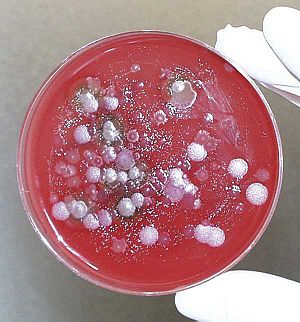 Marc Ostfield is the Senior Advisor for Bioterrorism, Biodefense, and Health Security, US Department of State, Office of International Health and Biodefense in Washington DC and believes that the concept of biosecurity as a primary strategy to combat terrorism is nothing more than an illusion.
Marc Ostfield is the Senior Advisor for Bioterrorism, Biodefense, and Health Security, US Department of State, Office of International Health and Biodefense in Washington DC and believes that the concept of biosecurity as a primary strategy to combat terrorism is nothing more than an illusion.
As a concept biosecurity, also known as pathogen security, suggests that governments can somehow assert control over terrorists who might use biological weapons, lethal pathogens, in their acts of violence against their enemies. However, virtually all pathogens exist in nature, the technology to manipulate and disseminate them is readily accessible and there are countless experts with the necessary skills to do so scattered across the globe. The anthrax attacks in the US in the wake of “9/11” are testament to this. It is odd that we have not seen further attacks of a similar nature since.
Biosecurity, says Ostfield, is essentially nothing more than a “diplomatic tool to stimulate international dialogue or scientific engagement.” It is, he adds, of only limited practical utility.
Given this state of international affairs and the enduring risk of a biological attack by a terrorist organisation, Ostfield suggests that an effective international policy strategy is needed to combat bioterrorism. Such a strategy, rather than relying on diplomatic niceties and a blinkered perspective on what is possible even with limited means, must be much wider than it has ever been.
“Foreign policy should instead emphasise enhanced biosurveillance and infectious disease early warning systems, effective and swift treatment, and strengthened preparedness and response mechanisms as the key to successful strategies to combat bioterrorism,” says Ostfield.
The fundamental flaw in assuming pathogen security can protect us from bioterrorism lies in the fact that it argues for non-proliferation of the materials and knowledge required to create a bioweapon. Unfortunately, combating biological threats is not quite as easy as tracking the whereabouts of nuclear materials, for instance, and look at how difficult that has been in the past with respect to the hunt for Weapons of Mass Destruction (WMD). Almost anyone with some life sciences training could set up a simple lab, obtain the necessary biological agents and twisted motivation, and put together a bioweapon. WMD does not have to be nuclear, bio could be just as devastating.
Foreign policy efforts must focus on greater cooperation among nations to detect outbreaks, communicate information and materials quickly and effectively, and successfully mitigate the consequences of a bioterrorism attack – with enhanced mitigation playing a crucial role in making bioterrorism a far less attractive or viable option.
When the H1N1 swine flu outbreak happened, there were huge numbers of conspiracy theorists who crawled out of the woodwork. Vast numbers of them attempted to post their nonsense on Sciencebase, but thankfully the moderators and spam filters trapped it. The most obvious reason that swine flu is not the result of a deliberate bioweapon release is that it’s not very good. A bioterrorist could create a much worse pathogen and release it into the population from within the US itself. Should that ever happen, no amount of airport screening simulations are going to preserve homeland security.
![]() Marc L. Ostfield (2009). Pathogen security: the illusion of security in foreign policy and biodefence Int. J. Risk Assessment and Management, 12 (2/3/4), 204-221
Marc L. Ostfield (2009). Pathogen security: the illusion of security in foreign policy and biodefence Int. J. Risk Assessment and Management, 12 (2/3/4), 204-221